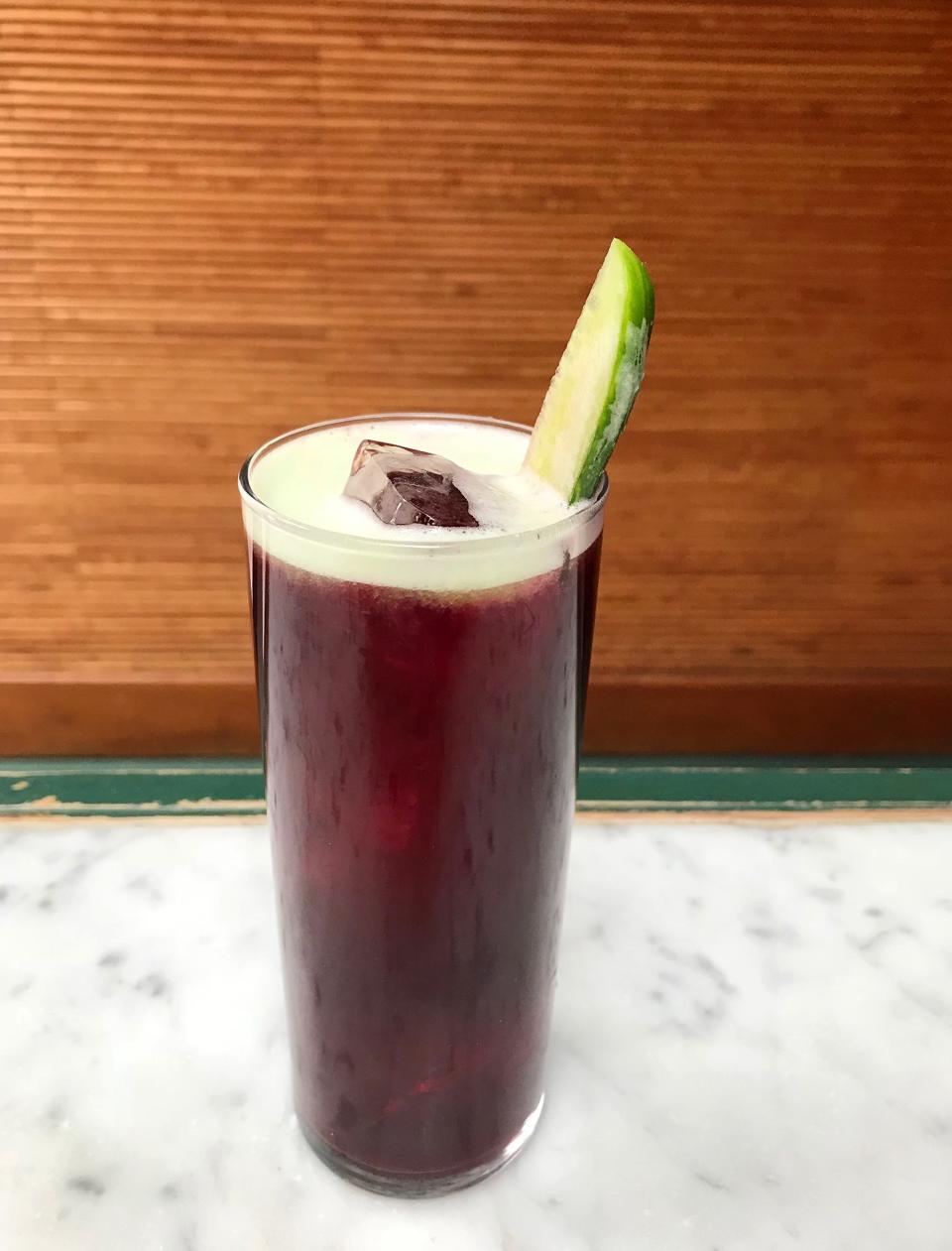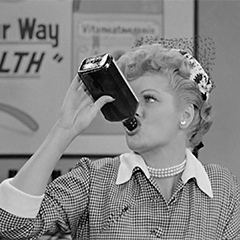Why You’ll Find Vinegar in Your Cocktails This Spring
You’ve heard of taking a shot of apple cider vinegar for your health, but what about taking a shot of alcohol with your apple cider vinegar? It might sound a bit mouth-puckering to the uninitiated, but vinegars, especially in the form of shrubs—syrups made from equal parts vinegar, sugar, and fruit, flowers, vegetables, or herbs—have recently become a cocktail mainstay, right up there with bitters, amaro, and tonic water.
Though they're suddenly, seemingly, everywhere, shrubs, also known as “drinking vinegars” aren’t exactly a new concept. “A shrub is actually a pre-colonial method of preserving seasonal produce, much like canning,” explains Dominic Carullo, bar manager at the Philadelphia restaurant Royal Boucherie. “They were used in beverages, dressings, and as ingredients in sauces—but they didn't find their way into too many cocktails until much more recently.”
Carullo attributes the use of shrubs in cocktails to a few things. First, there was the cocktail renaissance of the 2000’s (fueled in part by the Cosmo-drinking ladies of Sex and the City), which lead to an explosion of craft cocktail bars in the 2010s. “With so many cocktail bars everywhere, bartenders were trying very hard to create the next big thing. Creations became redundant, and we all needed to start looking for new ingredients,” Carullo says. “We began reaching back into the old world for ingredients and techniques.”
When combined with an increased interest in sustainability and customers’ desire for wellness-enhancing tonics (ahem, kombucha), using shrubs became a no-brainer. “The massive trend toward hyper-locality and hyper-seasonality caused more chefs and bartenders to think about methods like canning and pickling,” says Carullo. “A pint of raspberries will go bad in a couple of nights, but that same pint turned into a delicious shrub will last several months. That's huge in a industry where waste/loss management is a very real thing.”
But it isn’t all economics and cultural shifts that make shrubs so appealing: they’re darn tasty, too. “They can really bring a bright, fun new element to a drink,” says Carullo. “Creativity really has no bounds—you can experiment with various fruits, vegetables, herbs, and spices, and a wide variety of sugars, salts, and vinegar. You could mix thousands of shrubs, and never repeat yourself.”
Below, bartenders and beverage professionals share a few more reasons to get into shrubs this spring and summer. Read on for more, plus, an easy recipe in case you’re inclined to make your own.
The Possibilities Are Endless
Shrubs can be made with any vinegar and flavored with everything from cucumbers to beets to lavender, so there’s basically a shrub for every palette and occasion. “The vinegars used to make shrubs cover a wide range of intensity,” says Gunnar Lindquist, bar manager at Chicago’s Luxbar. “The lightest—white wine or champagne vinegar—pair well with delicate flavors such as cucumber, celery or flowers. On the opposite side of the spectrum, you can use balsamic vinegar to bring a dark, intense backbone to the cocktail, almost like a Bordeaux-style wine.”
No Alcohol Necessary
For those abstaining from liquor—and the bartenders trying to please them—shrubs can be a godsend. “Interesting non-alcoholic cocktails have always been hard to create because, thanks to barrel-aging and the addition of flowers, spices, and citrus during distillation, spirits provide such unique flavor profiles,” explains Lindquist. “But vinegar gives bartenders a complex backbone to create non-alcoholic cocktails with.” Naren Young of New York’s famed Dante agrees: “Non-alcoholic cocktails have become an important part of any decent bar's beverage program; shrubs are an obvious choice when it comes to that part of the menu.”
But Any Spirit Will Do
“Shrubs have an ability to compliment numerous types of liquors, be it clear spirits such as vodka, gin, tequila, mezcal, or brown spirits such as dark rum, bourbon, rye, and even blended scotches,” notes Fred Jones, head bartender at Brooklyn’s Barano.
They Pair Well With Food
“The current trend is to offer approachable, lower-alcohol cocktails to compliment the food menu,” says Jones. “Shrubs pair well with food because they ride the razor's edge between sweet and acidic. With the right balance, a shrub can make any dish pop and brighten. Think: salads and antipasto, bruschetta and crudo. Or, if really want to set off your roasted spring duck, pair a blackberry/rosemary shrub with rye whiskey and lime juice.”
They’re Seasonless
“Shrubs are delicious in the warmer months, as they sing brightest with ripe fruit flavors and tall, spritzy cocktails,” says Carullo. “However, I've cracked open peach shrubs in the middle of a cold winter night and stirred in a bit of cognac and suddenly felt I was walking barefoot through the orchards on a warm summer day.”
They’re Good for You
Even if you add a splash of vodka to your shrub, you’re still getting the health effects of vinegar, which as Bill Cromwell, head bartender at Maysville in New York points out, “are known for being packed with enzymes and detoxifying properties that support a healthy body and metabolism.” Lindquist agrees, adding, that “along with vinegar providing support in regulating blood sugar, balancing pH, and killing bacteria, you also get the added benefit of vitamin intake thanks to the fruits or vegetables used to make the shrub.”

Garden Fizz Cocktail
A light, yet earthy, vegetal, effervescent cocktail, incorporating a beet shrub courtesy of Jim Kearns, beverage director at New York’s Tijuana Picnic.
1 1/2 oz of mezcal, tequila, or gin (all would work)
1 1/2 oz beet shrub*
1 oz cucumber juice
1 oz soda
*To make the beet shrub: Wrap beets in foil and roast for about 45 min at 375º. Allow them to cool and then pulse them down to a coarse paste in a blender or food processor. Weigh the beet paste, and add an equal weight of turbinado sugar and rice wine vinegar, so the ratio is 1 part of each ingredient, by weight. Allow to sit, covered, for a couple of hours, until the sugar dissolves.
Shake the beet shrub and spirit briefly; strain over ice in a Collins glass.
Add soda.
Shake cucumber juice briefly, without ice, to froth it up.
Pour in cucumber juice, foam on top.
Garnish with cucumber spear.


